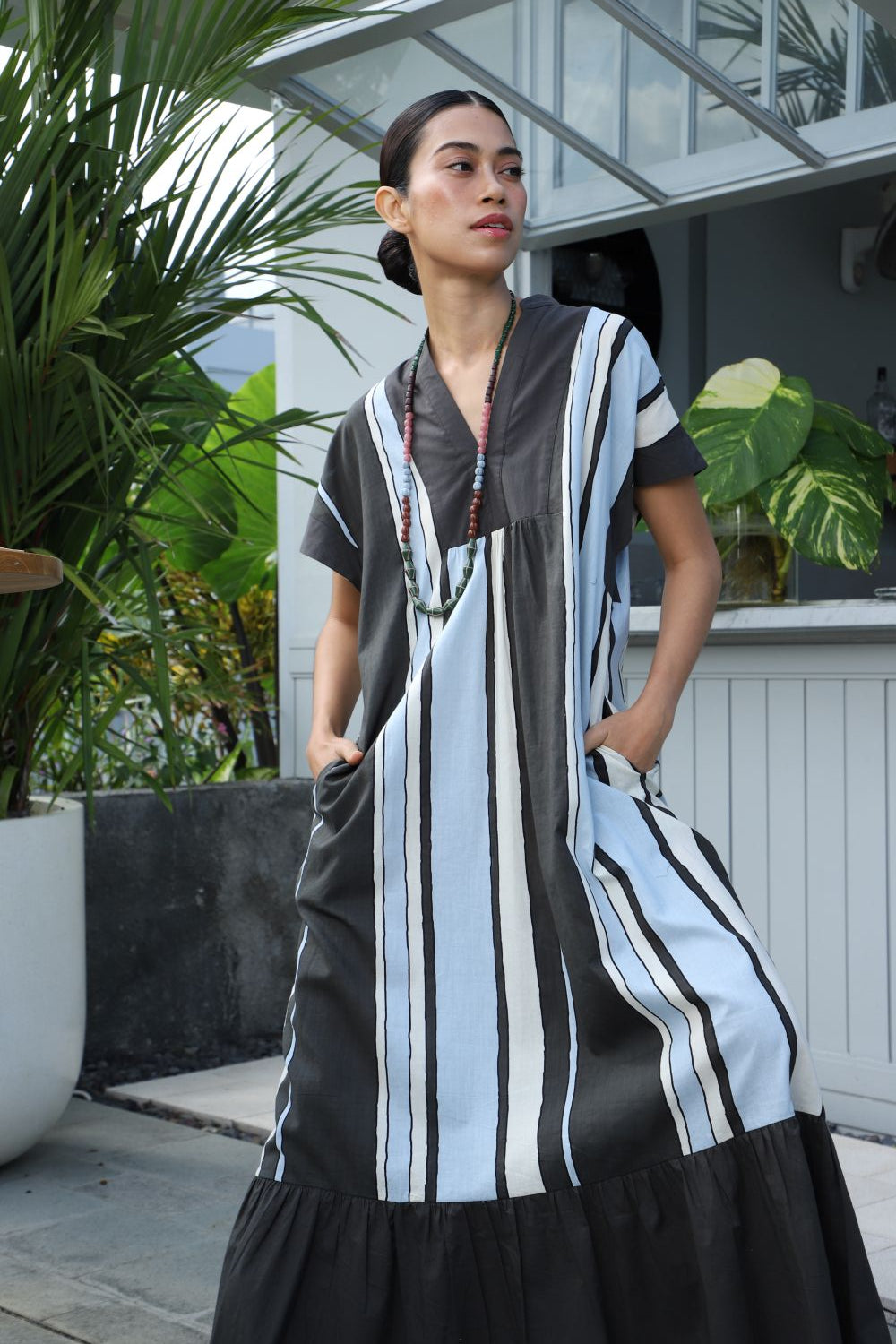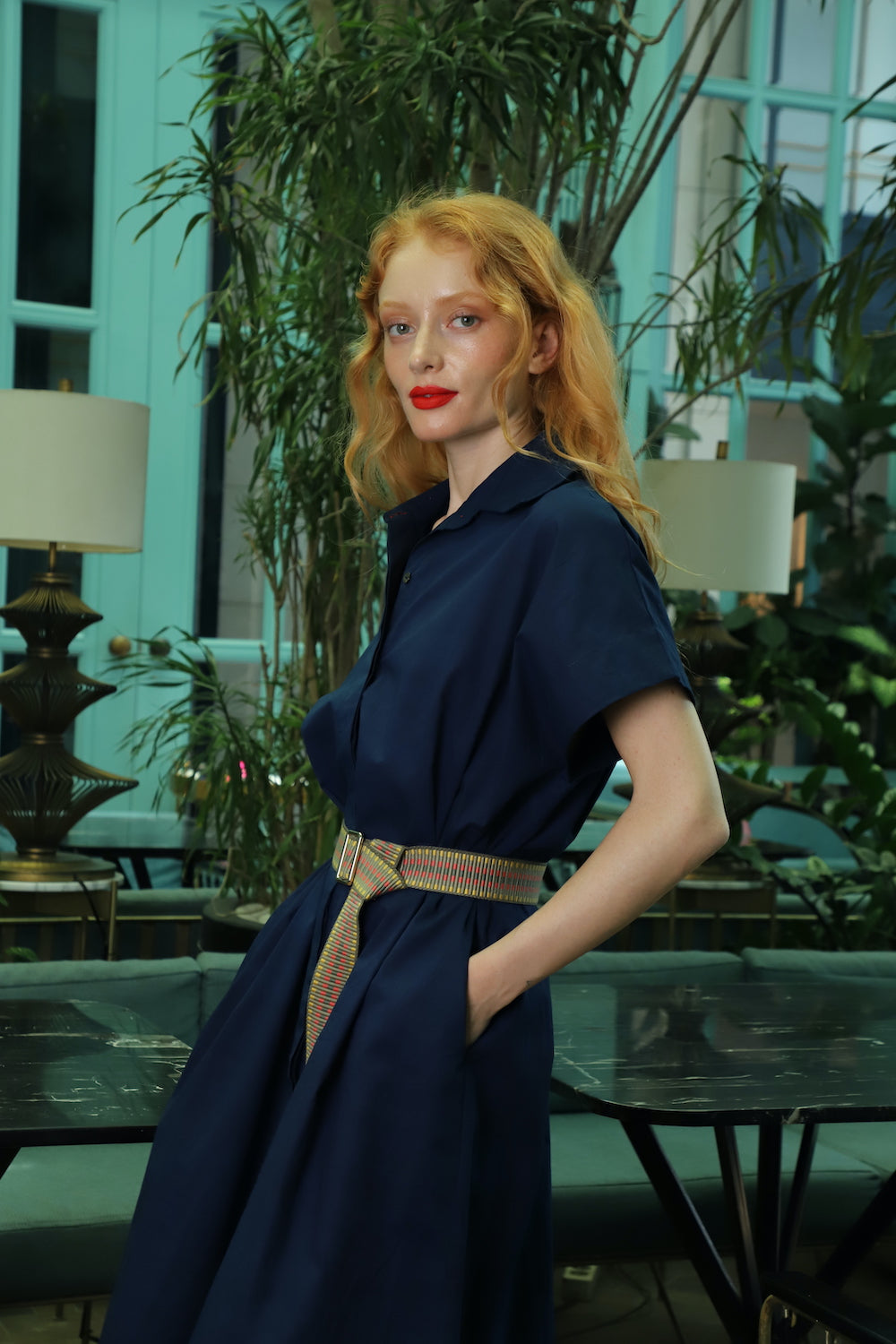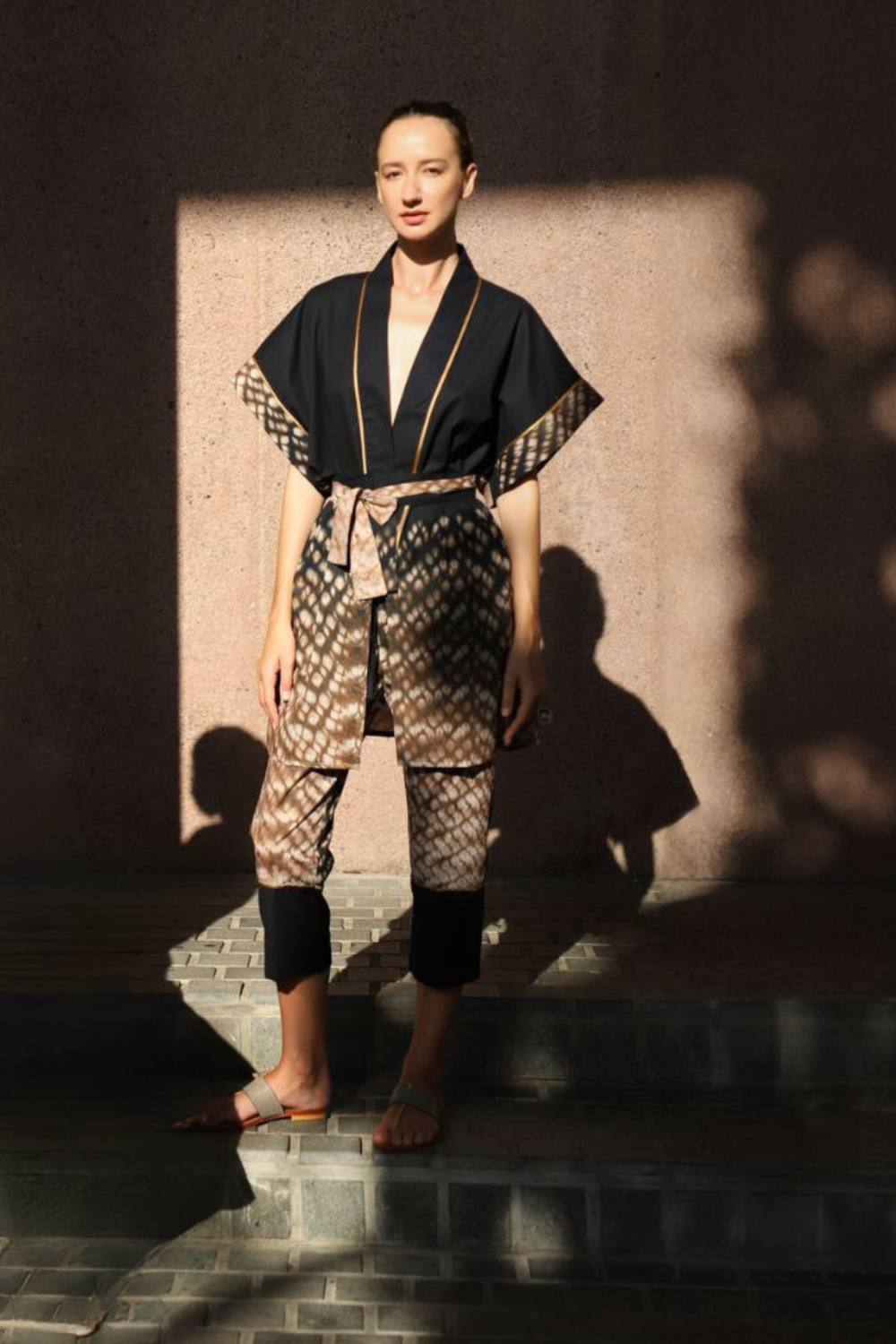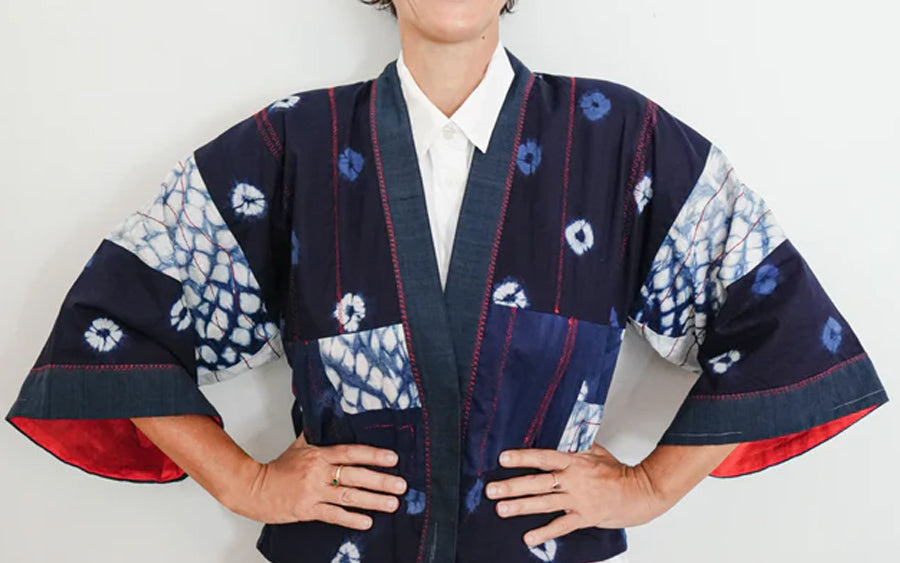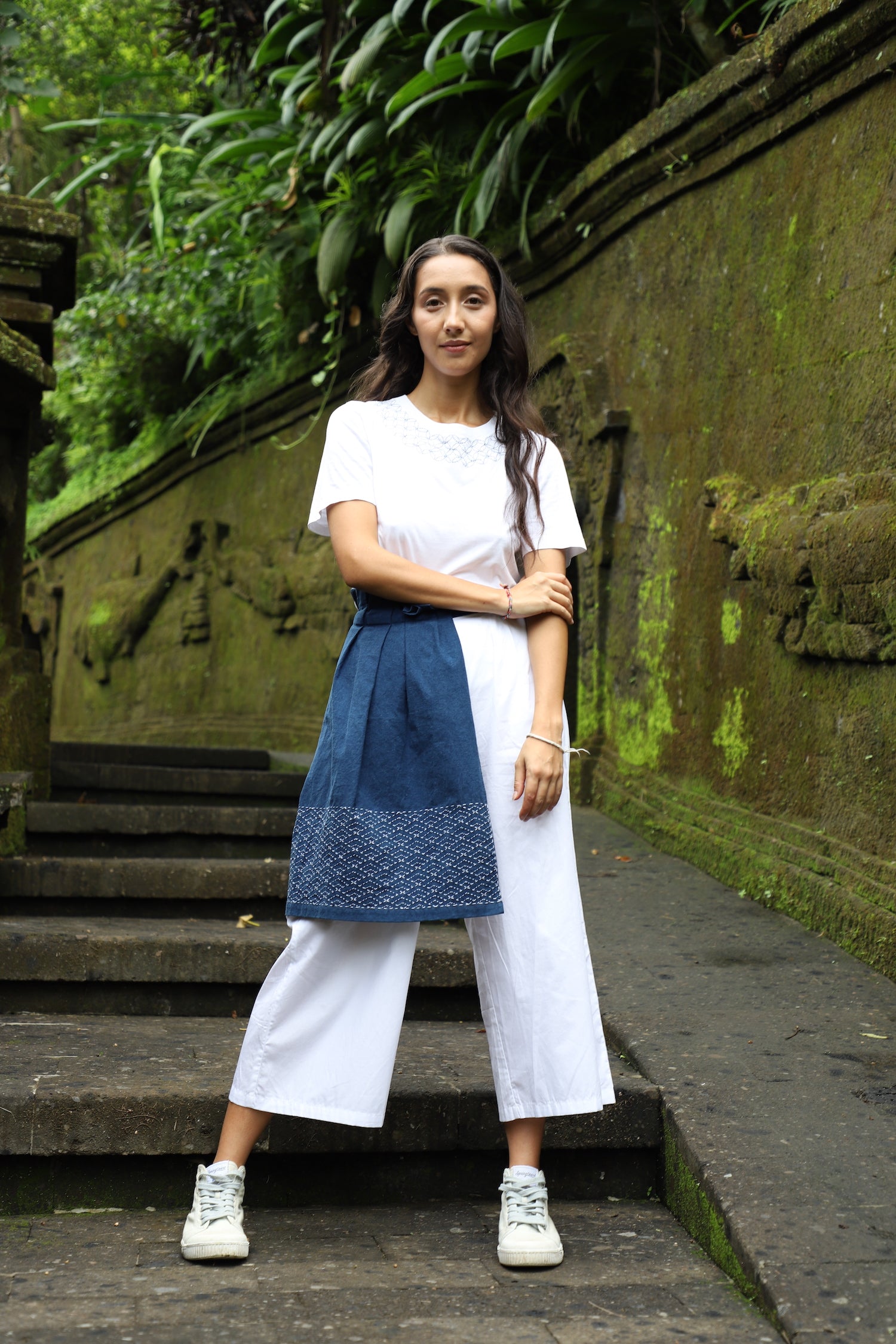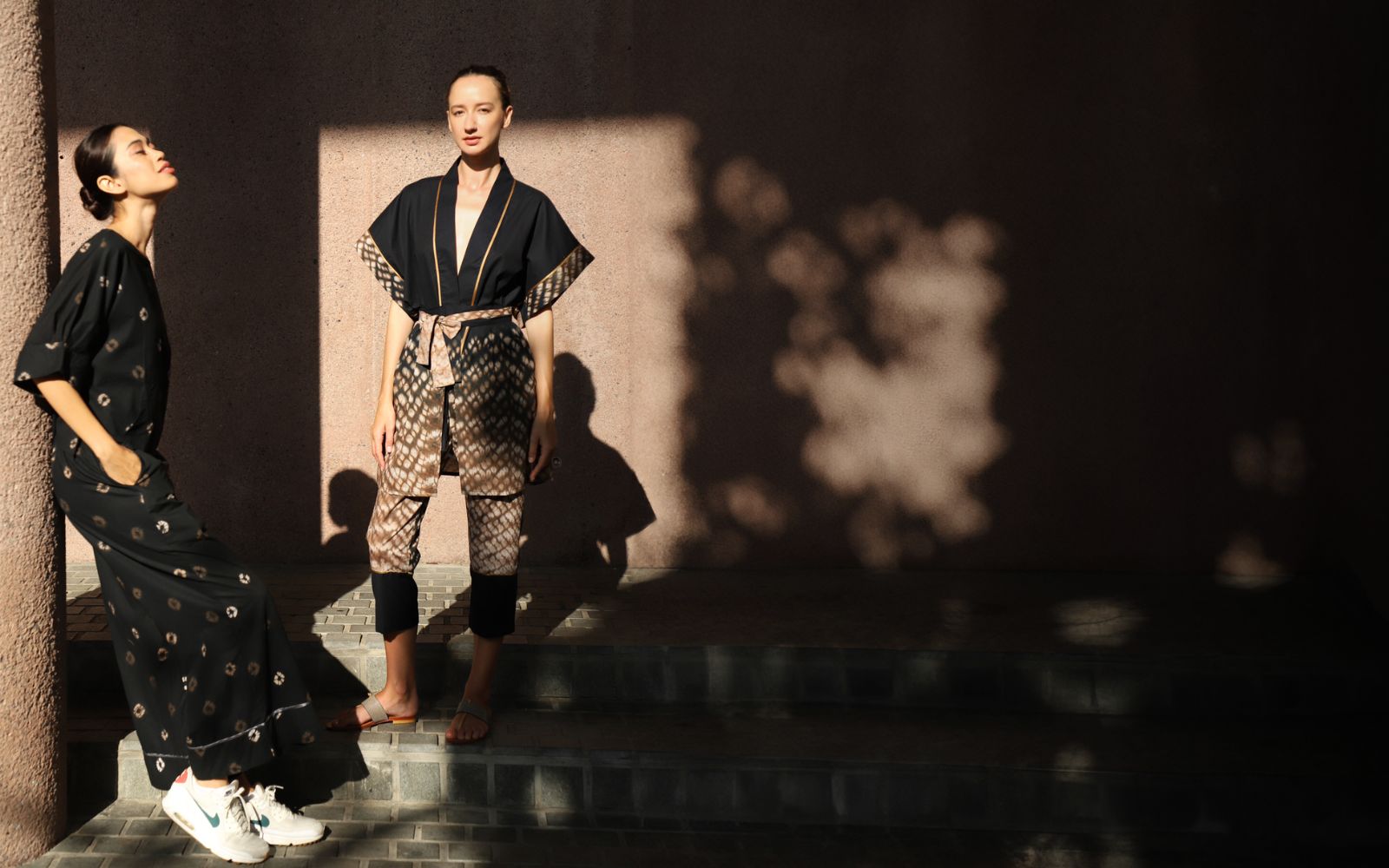
The Art of Shibori
Unveiling our Shibori capsule collection in natural indigo and mahogany dyes – Shibori comes from the Japanese root word Shiboru, meaning to wring, fold or bind.

In japan, this artistic style of dying dates back to the 8th century, when indigo was the main dye used - attention to every small detail is a feature of these unique dying art . Part of the mystery and magic of hand dyed fabric is that no two shibori will never look the same - each piece is its own individual work of art.
We are very proud to work with javanese artisans, who passionately have manipulated and hand dyed each piece of fabrics for our capsule collection.
Lush green Indigo leaves picked in the nearby plantations turned into brilliant and deep hues of blues through fermentation, soaking and dipping the fabrics in the dye baths. Barks from local mahogany trees created soft shades of grey to deep black.


Our Melati pattern known as Kanoko shibori or Indian Bandhani is meticulously handmade by artisans that take little pinches of fabric and wrap a peg and a rubber band tightly around the base of each little “ponytail.”

The Honeycomb shibori involves wrapping the fabric around a length of rope to create a resist. The result is a flowing soft gradient of color and resisted white areas also known as snake skin pattern.
The Melati and the Honeycomb patterns in black are magically created by dipping first the fabric 15 times in indigo and then 4 times in mahogany. Our indigo melati and honey patterns are both dyed with natural indigo, dipped more than 10 times in indigo paste mixed with water. The grey melati pattern is dipped in mahogany bark 8 times.
The artisans use the same water for the repeated dipping, the water is then given back to nature as dyes are created with leaves and barks.

Shibori is a process of love. Fabrics are first washed, rinsed and made ready for the dye and the resists is applied; they are then dyed in the colour(s) chosen and rinsed up to 15 to 20 times. Finally, the resists are removed and the fabrics are washed and hung to dry in nature – each piece is treated with passion, dedication and respect, artisans spend hours working on it – a true work of love and community at every steps, planting, preparing the dye, manipulating the fabrics and dying them.


